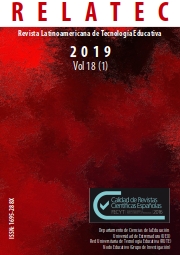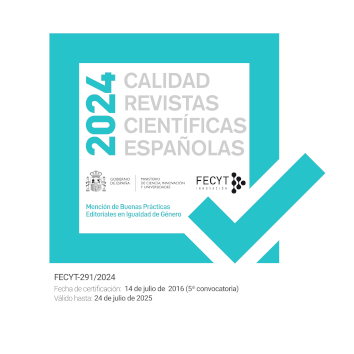Integration of educational robotics in Primary Education
DOI:
https://doi.org/10.17398/1695-288X.18.1.107Keywords:
Primary Education, Technology, Robotics, Educational Technology, OpinionAbstract
As technology advances, its influence in different sectors of our society is increasing. The educational field is not left out and is also forced to reconfigure itself assessing aspects which have not been considered until few years ago, as is the case of the introduction and application of ICT or educational robotics. The aim of this article is to analyze the perception and opinion of teachers, families and students of a school in the Basque Country about educational robotics, programming and related digital skills in the stage of Primary Education. To this end, a course has been carried out in which a group of 2nd grade students from Elementary School. work for the first time with different resources and materials of educational robotics: Lego WeDo 2.0 and Blue-bot. The intention is to contrast the opinion of some members of the educational community before and after the course; for which various instruments will be used. Mention that, according to the general results, there are differences between the pretest and the posttest that benefit the perspective on the integration of educational robotics in the classroom. Likewise, it is concluded that both its pedagogical use and teacher training are controversial issues, although the educational opportunities offered by these technologies are recognized to face the challenges of today’s society.
Downloads
References
Carneiro, R., Toscano, J. C. y Díaz, T. (2009). Los desafíos de las TIC para el cambio educativo. Fundación Santillana. Recuperado de http://www.oei.es/historico/publicaciones/detalle_publicacion.php?id=10
Cohen, L., Manion, L. y Morrison, K. (2000). Research methods in education. London and New York: Routledge Falmer. https://bit.ly/2BdCnOz
Decreto 236/2015, de 22 de diciembre, por el que se establece el currículo de la Educación Básica y se implanta en la Comunidad Autónoma del País Vasco (BOPV, 15-01-2016)
García, J. M. (2015). Robótica Educativa. La programación como parte de un proceso educativo. Revista de Educación a Distancia, 46. Recuperado de http://revistas.um.es/red/article/view/240201/182941
Herodotou, C. (2017). Young children and tablets: A systematic review of effects on learning and development. Journal of Computer Assisted Learning, 34(1), 1-9. Recuperado de https://onlinelibrary.wiley.com/doi/epdf/10.1111/jcal.12220
Ley Orgánica 8/2013, de 9 de diciembre, para la Mejora de la Calidad Educativa (LOMCE). (BOE de 10-12-2013)
López, M. M. (2013). De las TICs a las TACs: la importancia de crear contenidos educativos digitales. DIM: Didáctica, Innovación y Multimedia, 27, 1-15. Recuperado de http://dim.pangea.org/revistaDIM27/docs/AR27contenidosdigitalesmonicamoya.pdf
Martínez, N. M. M., Olivencia, J. L. y Meneses, E. L. (2016). Robótica, modelado 3D y realidad aumentada en educación para el desarrollo de las inteligencias múltiples. Aula de Encuentro, 18(2). Recuperado de https://revistaselectronicas.ujaen.es/index.php/ADE/article/view/3191/2625
Montanés, G. (2014, 19 de agosto). La robótica educativa ayuda a los alumnos a razonar; eso vale para Informática y para Filosofía. El diario norte de Navarra. Recuperado de https://www.eldiario.es/norte/navarra/ultima_hora/robotica-educativa-alumnos-Informatica-Filosofia_0_293621134.html
Moreno, I., Muñoz, L., Serracín, J. R., Quintero, J., Pittí Patiño, K. y Quiel, J. (2012). La robótica educativa, una herramienta para la enseñanza-aprendizaje de las ciencias y las tecnologías. Teoría de la Educación. Educación y Cultura en la Sociedad de la Información, 13(2). Recuperado de http://www.redalyc.org/html/2010/201024390005/
Piaget, J. (2014). Seis estudios de psicología. Barcelona: Labor.
Sáez López, J. M. y Cózar Gutiérrez, R. (2017). Pensamiento computacional y programación visual por bloques en el aula de Primaria. Educar, 53(1), 129-146. Recuperado de http://www.redalyc.org/pdf/3421/342149105008.pdf
Sáez López, J. M. y Domínguez-Garrido, M. C. (2014). Integración Pedagógica de la aplicación Minecraft Edu en Educación Primaria: un Estudio de Caso (Pegagogical Integration of the Application Minecraft Edu in Elementary School: A Case Study).Pixel-bit. Revista de Medios y Educación, 45, 95-110. Recuperado de https://papers.ssrn.com/sol3/papers.cfm?abstract_id=2532508
Simsek, N. (2005). Perceptions and opinions of educational technologists related to educational technology. Journal of Educational Technology & Society, 8(4). Recuperado de http://www.jstor.org/stable/jeductechsoci.8.4.178?seq=1#page_scan_tab_contents
Vicente, F. R., Llinares, D. A. Z. y Sánchez, D. N. M (2017). Diseño de proyectos STEAM a partir del currículum actual de Educación Primaria utilizando Aprendizaje Basado en Problemas, Aprendizaje Cooperativo, Flipped Classroom y Robótica Educativa. Departamento de Ciencias de la Educación. Valencia: Universidad CEU Cardenal Herrera. Recuperado de: http://dspace.ceu.es/handle/10637/8739
Wing, J. M. (2006). Computational thinking. Communications of the ACM, 49(3), 33-35. http://dx.doi.org/10.1145/1118178.1118215
Downloads
Published
Issue
Section
License
Authors who publish in this journal accept the following conditions:
1. The Author retains copyright in the article. Upon acceptance of the article, the author shall grant to the Publisher the right of first publication of the article. with the dcoument registered with the Creative Commons Attribution-NonCommercial-NoDerivative 4.0 International (CC BY-NC-ND) license, which allows to third parties to use what is published whenever they mention the authorship of the work and the first publication in this journal.
2. Authors can make other independent and additional contractual agreements for the non-exclusive distribution of the article published in this journal (eg, include it in an institutional repository or publish it in a book) provided they clearly indicate that the work was published for the first time in this journal.
3. Authors are allowed and recommended to publish their work on the Internet (for example on institutional or personal pages) before and during the review and publication process, as it can lead to productive exchanges and a greater and faster diffusion of published work (see The Effect of Open Access).









